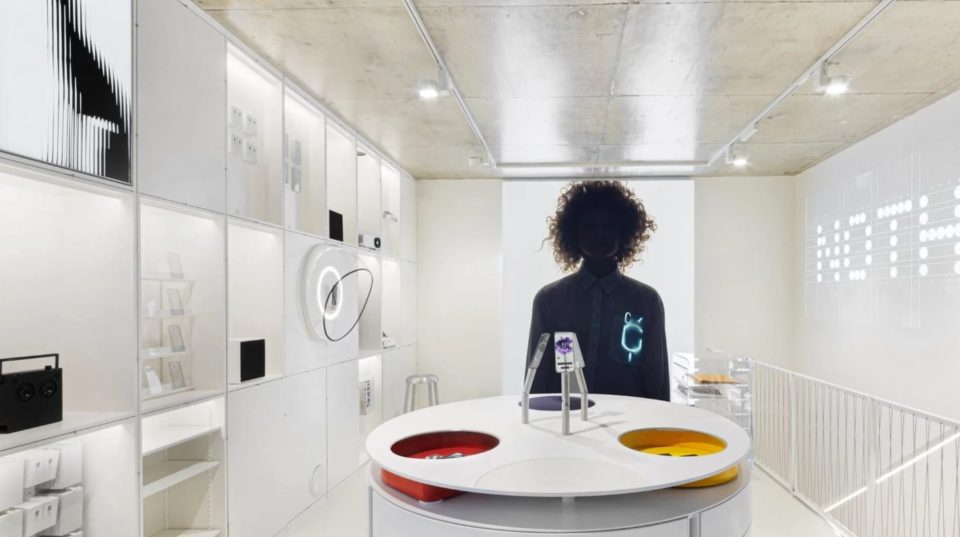How Retailers Can Better Leverage Customer Data for Growth

Every retailer knows how important customer experience is but getting it right is the real challenge. Many are looking to personalization to solve the problem but aren’t sure how to use all the customer data they have to create a human-focused customer experience.
CX strategy studio Amplify Design puts the shopper first to drive the shopping behavior and conversion that retailers want to see. It helps retailers connect data across the shopping journey to acquire, convert and retain customers.
We spoke to Amplify founder Ann Conway about where retailer data strategies are going wrong, connecting customer data to the shopping journey, and how to create a seamless omnichannel experience.
Ann Conway, Founder, Amplify Design
How do retailers struggle with customer data?
We often hear from retailers that they have so much data but don’t really know how to use it. They know they should be using it to improve their customer experience or conversion but they’re not really sure where to start.
On the other side, there are the retailers who’ve invested a lot already in personalization but they don’t know how to gauge what the return on those investments have been. They’re not sure if personalized journeys really change shopper behavior. What keeps them up at night is the worry that the data their models use is flawed and customers are being misidentified and getting the wrong experiences.

Why is it hard for retailers to measure the ROI of personalization?
Everyone assumes that personalization is good and they should be doing more of it, but not much attention has been paid to how that strategy will actually make things better for customers.
For example, personalization often shows up in ecommerce as product recommendations, but in our research we’ve found that those recommendations can be irrelevant to customers if they are just browsing and not ready to buy, and when you don’t know much about the customer, the products are not the right ones anyway.
A better way to use the data that you have about customer behaviors is to understand where the customer is in the shopping journey and what their goal or need is and then change your content and how you interact with the customer based on that.
Right now retailers don’t have good measures for how personalization improves the customer experience overall. That kind of vague goal makes it hard to measure ROI. Better metrics would be more progress and less dropout at specific points in the shopping funnel.
For instance, personalized search could lead to more PDP views per session, understanding the use context of the product they are shopping for could lead to cross shopping more categories, or flagging high value customers and delivering high touch service could lead to higher order value for that group.
What can retailers do to make personalization more effective?
Sometimes retailers focus on improving parts of the customer experience like whack-a-mole: tweaking a product page here, launching a new marketing campaign there, or training staff for better in-store interactions. These often lead to disappointing results.
To personalize and improve the customer experience and drive the growth metrics they want, retailers need to deeply understand their end to end customer journey today. That means talking to, shopping with, and following real customers through their entire shopping process – across all the touchpoints and channels, and before, during and after they interact with your brand. You can’t just look at isolated slices of the experience.
By really understanding and empathising with how real people experience your brand, retailers will see how customer groups differ in meaningful ways and where and why they struggle and drop out in the journey.
Those insights become the foundation of your personalization strategy. Retailers can start to identify customers by the human dimensions that actually drive behavior, and start to design cohesive, end to end journeys that help them meet their unique needs. This looks very different from trying to deliver personalization in isolated slices of the journey.

How can retailers make their data strategy more customer-centered?
The best place to start isn’t with the data itself but actually asking yourself what are the key differences between customers that are important for us to know?
For example, if you could pick one or two things that you would use to distinguish everybody who shows up in your commerce channels what would they be? So you might want to know who your most valuable customers are versus less valuable shoppers or to know if they are ready to buy today or just browsing.
Based on that, how would you differentiate the experience if you could tell two people apart? Perhaps you would create two different experiences or use different language or show them different products.
You can then work backwards to identify what kind of data you need to know about your customers to be able to differentiate them. Do you collect that today? If not, how can you get it?
Identifying the big differentiators between people that matter to your KPI’s and then mapping the data that you have against those differences is the thing that I don’t see a lot of people doing right now in their data strategy.
But retailers are still not going as far as they could. They’re not differentiating the store experience. The store is still treated like a black box where the retailer doesn’t know anything about the customer until they buy and that’s not true.
Retailers need to be a bit more sophisticated about understanding what customers are trying to do and bring in the data they have to solve those issues.
What other customer data should retailers collect?
There are a few key types of data that can help retailers segment customers in more meaningful ways and understand what will drive them to act:
Stage of the shopping journey: where they are in the process of inspiration, discovery, evaluation and purchase can determine what they want to see. Giving the right next step for where they are can keep customers engaged in the funnel and prevent dropoff.
Attitudinal segment: What’s most important to the customer and what drives purchase decisions? This can determine whether their experience is focused on savings, discovery, convenience, or another kind of value.
Contextual shopping need: This is low hanging fruit – customers are rarely shopping for a product in isolation. Asking how it will be used can open up opportunities to introduce lots of other category recommendations.
Retailers are not going to be able to interpret these from historical and behavioral data – retailers need to start asking customers for input and to help choose their own path during the journey. We’ve seen that not only are customers willing to do this if they see the experience improve with their input, it makes them feel like the brand really cares about their unique needs and it builds emotional loyalty.
Do your personalized journeys still feel a little… generic?
Join Amplify Design’s webinar on September 5th to learn how to build rich customer data profiles based on the key differences in customer attitudes and needs that drive shopping behavior (and that most retailers don’t track).
It’s limited to just 10 people, so secure your spot today.



